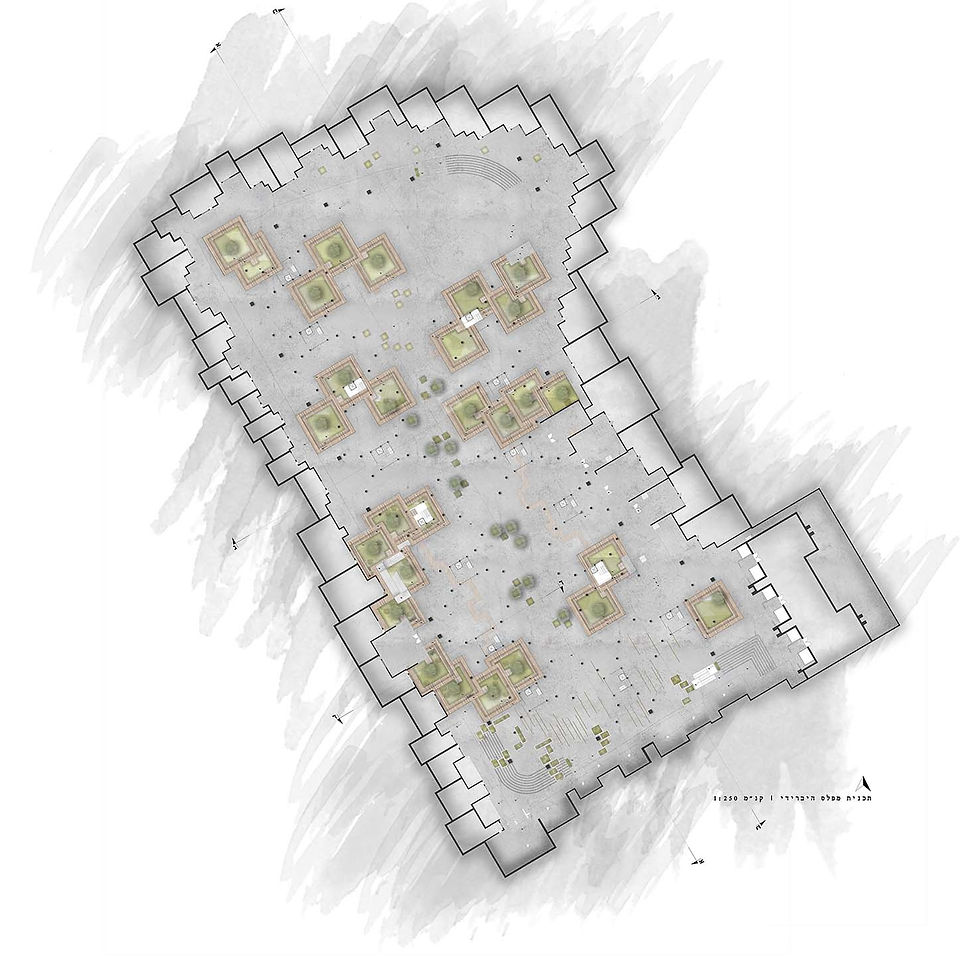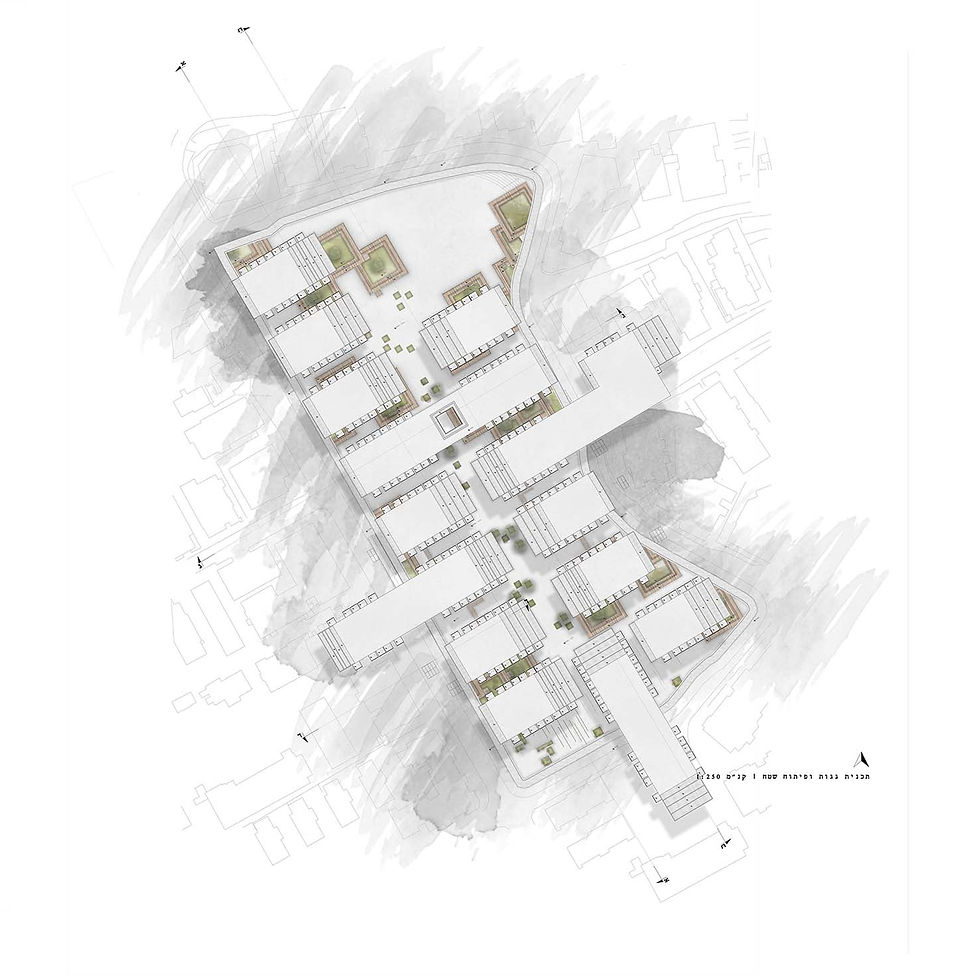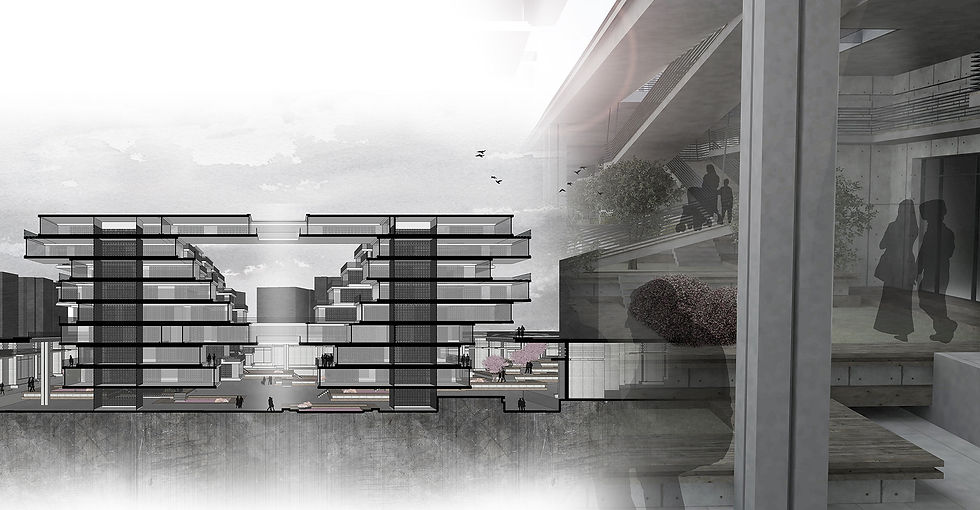Bnei-Brak is a city that was planned just as any other ordinary city, yet the changes that took place in its social-religious texture and components, aren't present in its actual urban-texture.
The Haredi-community, its symbols and values aren't inspired by western culture, but from religion, thus its residence and living arrangements are different. In the Haredi space, the wandering and roaming, or as they are often called by Haredi people – Shpatzirn – is mostly a practice meant for a higher purpose – the performance of Mitzvah. Shpatzirn dictates the being-in-the-world.
Considering the complexity that comes with the Shpatzirn, I chose to reformulate the dwelling culture in Bnei-Brak, and the relations between the private-space and the public-urban-space. The Haredi-community, even though it's somewhat secluded, as a self-preserving mechanism, isn't completely isolated, doesn't benefit from architecture meant for its ways of life.
Reflecting on the above, the project offers a cultural-architectural alternative to a life in the city, one that will create correlation between the essences within the place to the place itself.
In my perspective, an urban-block is a microcosm of a city, thus, by analyzing and understanding its essence, one can offer an architectural-alternative, a new movement in Bnei-Brak; Roaming, wandering, Shpatzirn in Yiddish. My architectural proposal is an improved urban block, one that is dug few floors below street's level, that inhabits vigorous and intense life, and able to contain a large number of living quarters and still preserve severe Jewish laws regarding the use of an elevator in Shabbat, the secular uses, such as stores, offices etc., are separated from the religious ones, and the movement in its boundaries is born from several principals such as laws of Shabbat, Beit Midrash, and more.
Shpatzirn
Reformulation of the Haredi-urabn space in Bnei-Brak













